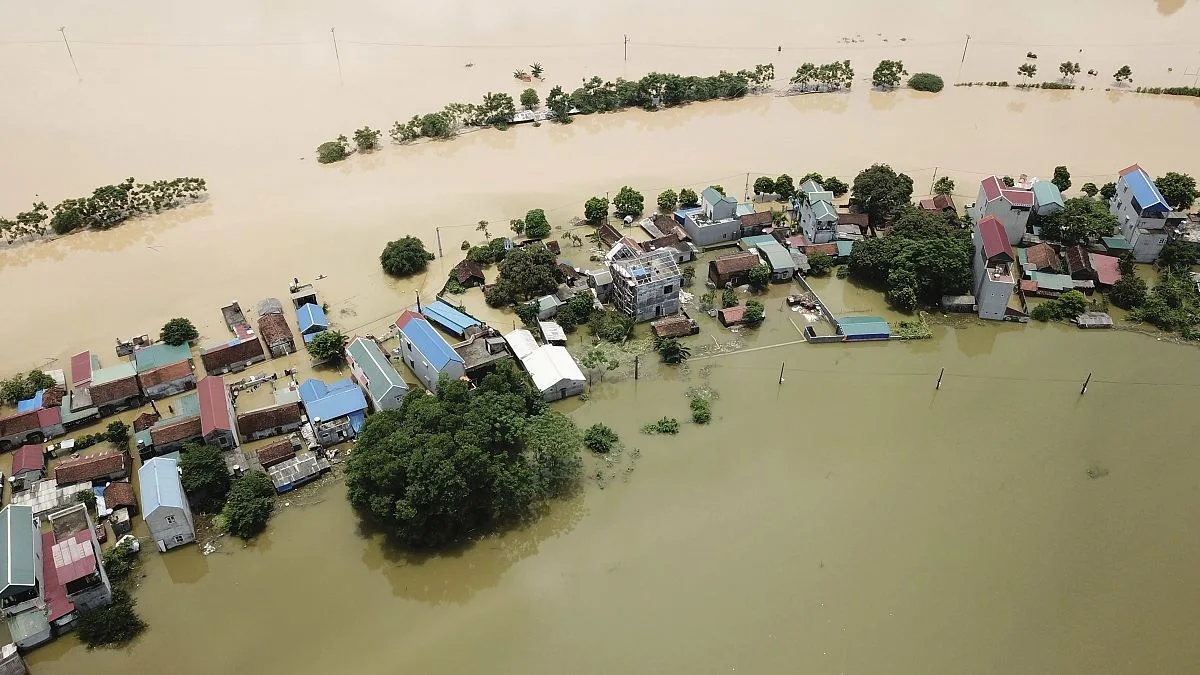Flooding, exacerbated by extreme weather events like Hurricane Helene, costs the United States approximately $5 billion annually. This staggering figure makes flooding the most financially devastating weather-related disaster in the country.
In response to this urgent issue, the federal government rolled out a program in 1990 that helps communities reduce flood insurance rates by implementing measures aimed at better flood management. For instance, towns that conserve open lands to act as barriers against coastal flooding or improve their stormwater management systems allow residents to enjoy discounts on flood insurance premiums. Research indicates that this initiative has been effective, significantly lowering overall flood damages in participating areas.
However, a recent study led by a researcher from MIT reveals significant variability in the program’s effectiveness across different communities. Higher-population areas, typically better positioned financially to invest in flood defenses, can save approximately $4,000 per insured household compared to smaller towns.
“When evaluating this program, we discover that its impacts vary considerably among various community types,” explains Lidia Cano Pecharromán, a PhD candidate in the Department of Urban Studies and Planning at MIT and co-author of the study.
Highlighting concerns around climate and environmental justice, she emphasizes the need to assess not only the policy’s efficacy but also who is benefitting. “This understanding is crucial for making necessary adjustments to achieve our objectives,” she adds.
The research paper, titled Exposing Disparities in Flood Adaptation for Equitable Future Interventions in the USA, is published in Nature Communications. The authors include Cano Pecharromán and ChangHoon Hahn, associated with Princeton University.
Investing in Flood Management
The initiative in question originates from the Federal Emergency Management Agency (FEMA). Specifically, the Flood Insurance Mitigation Administration established the National Flood Insurance Program’s Community Rating System in 1990. This system encourages communities to adopt strategies that minimize flooding.
Eligible actions include floodplain mapping, open space preservation, stormwater management, establishment of flood warning systems, and public information campaigns. In return, residents benefit from reduced flood insurance costs.
To conduct their study, researchers analyzed 2.5 million flood insurance claims filed with FEMA since the program’s inception, alongside U.S. Census Bureau data detailing community demographics and economic conditions, as well as flood risk information from the First Street Foundation.
By comparing over 1,500 communities participating in the FEMA program, the researchers evaluated its varying impacts based on characteristics such as population, race, income, and flood risk. Higher-income neighborhoods can more readily invest in flood-control initiatives, achieving better FEMA ratings and, ultimately, implementing more effective flood mitigation measures.
“Low-income communities see some benefits, but these diminish as flood risks escalate, while higher-income areas continue to reap the rewards,” Cano Pecharromán remarks. “They possess the resources to adopt strategies that combat greater flooding threats.”
Additionally, communities with higher education levels report approximately $2,000 in greater savings per flood insurance policy compared to those with lower educational attainment. Essentially, communities with inherent advantages—be it size, wealth, or education—are more equipped to engage expert resources for effective flood damage prevention practices.
Interestingly, among lower-income communities within the program, those with less ethnic diversity benefit more from flood management activities, gaining around $6,000 per household, contrasting with more racially diverse areas.
“These disparities are significant and warrant consideration when evaluating the effectiveness of climate adaptation policies,” Cano Pecharromán notes.
A considerable number of communities, approximately 14,729, are not involved in the FEMA program, often lacking the capacity to address their flooding challenges even to a minimal degree.
“If we consider all communities not participating in the program due to their inability to engage in basic flood measures, we would likely uncover even greater disparities,” she states.
Enhancing Community Support
To increase the program’s impact, Cano Pecharromán advocates for federal support to help communities implement effective flood management strategies.
“When developing policies, it is essential to acknowledge that different communities may need assistance with adoption and implementation,” she advises.
Employing a sophisticated statistical approach previously used by Hahn, who specializes in astrophysics, the researchers quantified the program’s effects by distinguishing communities based on specific characteristics rather than generalizing. This method allows for a more nuanced understanding of how various factors—income levels, education, and more—affect the program’s outcomes.
Cano Pecharromán has recently presented her preliminary findings to government officials, who expressed interest in the implications of the study. She is currently working on a follow-up project that aims to identify which local flood-mitigation programs offer the most significant benefits to communities.
Support for this research came from the La Caixa Foundation, the MIT Martin Family Society of Fellows for Sustainability, and the AI Accelerator program of the Schmidt Futures Foundation.
Photo credit & article inspired by: Massachusetts Institute of Technology



